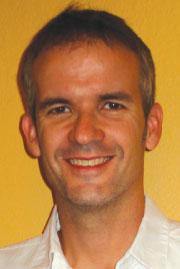 |
||||||||

Green Jobs: The What, The Where, The Why
By Scott M. Deitche
 “Green jobs” have been the buzzword in economic development for a few years now. From politicians who envision millions of green jobs to naysayers declaring they don’t exist, it’s tough to know how much of an impact green jobs have had on our economy. It’s even harder if you’re thinking about a green career in your future.
“Green jobs” have been the buzzword in economic development for a few years now. From politicians who envision millions of green jobs to naysayers declaring they don’t exist, it’s tough to know how much of an impact green jobs have had on our economy. It’s even harder if you’re thinking about a green career in your future.
But fear not, between the hope and the hype, there is a real green economy emerging. The Bureau of Labor Statistics just released a report showing that there were about 3.1 million green jobs (referred to in the report as green goods and services) in 2010 in the United States. While this represents less than 3% of all employment, it’s a number that has continued to grow, through recession, politics and the realities of the world market.
Green jobs are not new. Many of the people who read and write for Bay Soundings are in a green job, and some have been for a long time. What’s new is the wider variety of jobs that fall under the green category, that didn’t exist even a decade ago. A green job can be in alternative energy, traditional engineering, contracting, manufacturing, and even creative class jobs like design and fashion.
What’s interesting to note is that, according to both the Brookings Institute and the Bureau of Labor Statistics, 75% of green jobs are found in the private sector. This shows that caring for the environment can have an economic benefit as well. It’s certainly true in Florida, where a healthy environment supports such mega-industries as tourism, fishing, and watersports.
It’s no longer just about good PR to get a company some good press. Companies from Wal Mart to Coca-Cola have taken sustainability metrics and incorporated them into every aspect of their business models. And with that, comes more jobs.
There are a few ways to start on your path to a green career. One area that has seen tremendous growth is the availability of environmental education tracks at local colleges and universities. The University of South Florida started a Masters in Sustainability through its Patel Center for Global Sustainability. Eckerd College, the University of Tampa, Hillsborough Community College, St. Petersburg College and USF all have degree programs in either environmental science or sustainability. There are dozens of trade and vocational training programs across the country for solar and wind turbine maintenance, as well as green manufacturing.
One reality is that green jobs are not universally available in all regions. If you want alternative energy like wind or geothermal, you should look towards the Great Plains. New England has a lot of green jobs, as does California. Be adaptable.
Finally, one of the most important aspects of a green career is to get as much experience as you can now, to set you apart from everyone else out there looking to get into the field. Get involved! Sign up for a beach clean-up, get involved with one of the many environmental groups in the Tampa Bay area, volunteer to help out on community projects, recycle, the list is endless. There are also great environmentally themed events around the area, from the Living Green Expo to the Give a Day for The Bay events sponsored by the Tampa Bay Estuary Program.
A green job gives you the perfect blend of doing something good for the environment, for your community, and earning a living. And while they are still a small part of the jobs out there, their growth is very real.
Scott M. Deitche is the director of environmental and water resources with GPI Southeast, Inc. in Tampa. He is the author of six books, including Green Collar Jobs: Environmental Careers for the 21st Century (Praeger, 2010).
